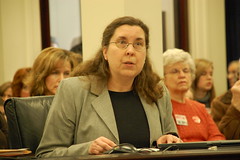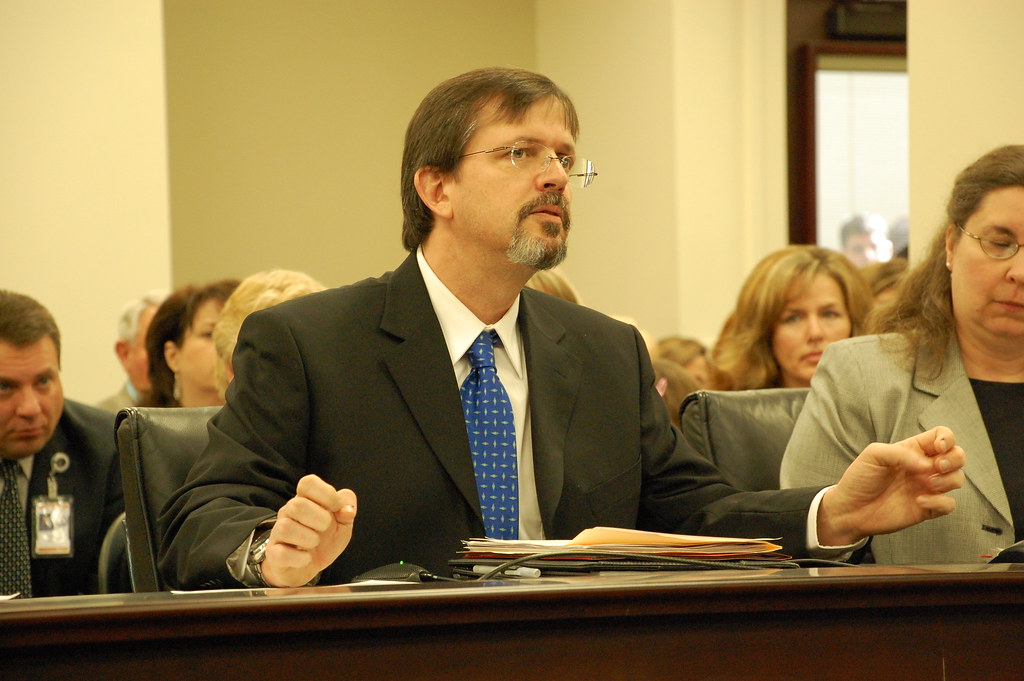Hearing exposes coal's multi-billion dollar public health cost
While the Kentucky legislature has generally ignored the economic and environmental consequences of coal, it did get a few minutes today to consider the effects on human health when the House Committee on Health and Welfare gave KFTC 20 minutes on its agenda.
Our three panelists made those 20 minutes count, focusing on the dangers not only to coal miners but to the health of whole communities in the coalfields.
KFTC member Beverly May, a nurse practitioner who works in Perry County, said she sees miners who have contracted lung diseases from exposure to coal dust and silica dust. "At home in Floyd County, I have friends in Hueysville, David and Allen that are plagued by dust from both nearby strip mines and from coal trucks passing by their homes. This is the same sandstone dust which causes silicosis in the workers, so I have to wonder, what does it do to children with asthma or elders or anyone who breathes it every day?"
She described the headwaters of Raccoon Creek, which are now polluted from nearby mining. "So I have to wonder, is the public water supply safe?"
 |
| Beverly May |
 |
| Dr. Michael Hendryx |
"The coal industry isn't answering these questions because they don't have to," said May. "This body and the federal government have not held them fully accountable."
Dr. Michael Hendryx, director of the West Virginia Rural Health Research Center and an associate professor at West Virginia University, said his research has revealed higher rates of chronic heart, chronic lung and renal failure mortality rates in coal-producing areas than in the rest of Appalachia or the nation, even after the rates have been adjusted for other factors such as smoking, age and education.
"We have some evidence that the effects become stronger as the level of mining increases," Dr. Hendryx said. He attributed this to "significant impairment of air and water quality near mines." He also noted that poverty and economic disadvantage are major predictors of public health and that mining areas have the highest poverty rates.
A couple of Dr. Hendryx's reports can be found here and here.
Nancy Reinhart read a statement from Dr. Paul Epstein, associate director of the Center for Health and the Global Environment at Harvard Medical School. Among other findings, Epstein stated that 19 of the known chemicals used and generated in processing coal are known cancer-causing agents, 24 are linked to lung and heart damage, and several remain untested as to their health effects.
The oral testimony was supplemented with dozens of pages of documentation and medical research given to committee members.
Bill Bissett, president of Kentucky Coal Association, asked to rebut and was given a couple of minutes. He did not say burning coal or dumping toxic mining wastes in streams improved anyone's health or offer any refuting evidence, but did say the coal industry offers some scholarships to eastern Kentucky students to go to medical school.
Here's a video of the 21-minute hearing.
Recent News
Kentucky’s past legislative session showed alarming trend toward government secrecy
Churchill Downs takes more than it gives. That's why the Kentucky Derby is a no-go for me
‘We must never forget.’ Kentucky town installs markers for lynching victims.
Featured Posts
Protecting the Earth
TJC Rolling Out The Vote Tour – a KFTC Reflection Essay
KFTC Voter Empowerment Contractor Reflection Essay
Archives
- Home
- |
- Sitemap
- |
- Get Involved
- |
- Privacy Policy
- |
- Press
- |
- About
- |
- Bill Tracker
- |
- Contact
- |
- Links
- |
- RSS


Add new comment